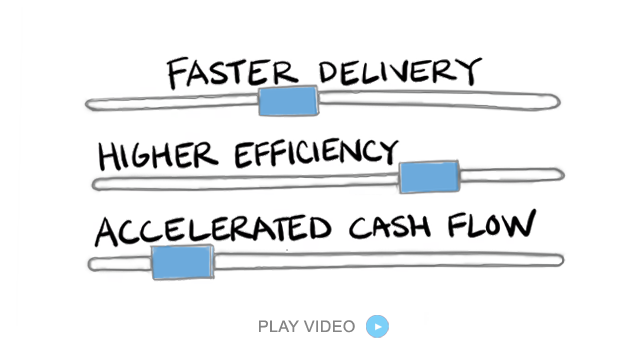
Harnessing Robotic Process Automation (RPA) in Packaging Manufacturing with PlanetTogether Integration
Production planners face the daily challenge of optimizing schedules, reducing costs, and meeting tight delivery deadlines—all while ensuring high-quality standards. The introduction of Robotic Process Automation (RPA) offers a groundbreaking solution to these challenges. Combined with advanced tools like PlanetTogether and its seamless integration with enterprise systems such as SAP, Oracle, Microsoft, Kinaxis, and Aveva, RPA has the potential to transform production planning processes.

What is Robotic Process Automation?
RPA involves the use of software bots to automate repetitive, rules-based tasks traditionally performed by humans. Unlike physical robots on the shop floor, RPA bots operate within digital systems, executing tasks such as data entry, report generation, and workflow management with incredible speed and accuracy.
For production planners, RPA offers the ability to offload time-consuming administrative tasks, enabling them to focus on higher-value activities like decision-making, problem-solving, and strategic planning.

The Role of RPA in Packaging Manufacturing
In packaging manufacturing, production planning is a complex process that requires juggling multiple variables, such as:
Machine availability and capacity.
Inventory levels of raw materials and finished goods.
Labor allocation and shift schedules.
Customer demand fluctuations.
RPA can enhance production planning by:
Streamlining Data Collection and Integration
Bots can extract data from various sources—including ERP systems like SAP and Oracle, supply chain tools like Kinaxis, and advanced planning systems like PlanetTogether—and consolidate it into a unified view. This eliminates the need for manual data extraction and ensures planners always have access to accurate, real-time information.
Automating Routine Tasks
Tasks such as updating production schedules, generating reports, and sending notifications can be fully automated, freeing up planners to focus on optimizing workflows.
Enhancing Decision-Making
By integrating with PlanetTogether and other planning tools, RPA can automatically identify bottlenecks, suggest schedule adjustments, and forecast potential delays, enabling planners to make proactive decisions.
Reducing Errors
Manual data entry and task execution are prone to errors, which can disrupt production schedules and increase costs. RPA ensures tasks are performed with 100% accuracy, minimizing disruptions.


Integration Between PlanetTogether and Leading ERP Systems
PlanetTogether is a powerful advanced planning and scheduling (APS) system widely used in packaging manufacturing facilities. When integrated with ERP systems like SAP, Oracle, Microsoft, Kinaxis, and Aveva, it becomes an even more valuable tool for production planners. Here’s how RPA amplifies this integration:
Data Synchronization
RPA bots can automate the synchronization of data between PlanetTogether and ERP systems. For instance, when a new order is entered into SAP, an RPA bot can instantly update the schedule in PlanetTogether, ensuring that production plans are always aligned with current demand.
Real-Time Adjustments
In dynamic manufacturing environments, plans often need to be adjusted in real time. With RPA, changes in machine availability or material shortages recorded in an Aveva system can trigger automated updates in PlanetTogether, enabling planners to quickly re-optimize schedules.
Enhanced Reporting
By combining data from Kinaxis and PlanetTogether, RPA bots can generate detailed reports that provide insights into production efficiency, resource utilization, and order fulfillment rates. These reports can be automatically distributed to stakeholders, ensuring everyone is informed.
Key Benefits of RPA for Production Planners
Streamlined Scheduling and Planning
RPA bots can automate data extraction from ERP systems like SAP or Oracle and feed it directly into PlanetTogether. This ensures that production planners have access to accurate, up-to-date information when creating schedules. The integration eliminates time-consuming manual data entry and minimizes errors caused by human oversight.
Enhanced Visibility Across Operations
With RPA, production planners can consolidate data from multiple systems, including Microsoft Dynamics or Aveva, into a single dashboard. This unified view allows for better visibility into production bottlenecks, inventory levels, and order statuses. As a result, planners can make proactive adjustments to schedules, reducing downtime and meeting delivery deadlines.
Improved Decision-Making with Real-Time Insights
Integration between RPA and PlanetTogether enables real-time updates on production metrics, inventory, and machine availability. For instance, if a machine goes offline, RPA can instantly notify the production planner and adjust the schedule in PlanetTogether to allocate resources to other machines. This dynamic approach helps minimize disruptions and keeps operations running smoothly.
Cost and Time Savings
Automating repetitive tasks like order processing, inventory updates, and report generation saves hours of manual labor. RPA bots work 24/7, ensuring that critical processes continue uninterrupted. The resulting cost savings can be reinvested in other areas, such as employee training or advanced technology adoption.
Scalability and Flexibility
RPA solutions can be scaled to meet the growing demands of a packaging manufacturing facility. Whether you're managing seasonal fluctuations or expanding operations, RPA provides the flexibility to adapt quickly without requiring significant infrastructure changes.
As packaging manufacturers face increasing pressure to deliver faster, more sustainably, and at lower costs, RPA will play a pivotal role in achieving these goals. The combination of RPA, PlanetTogether, and ERP systems creates a powerful ecosystem that empowers production planners to navigate complex challenges with ease.
By automating repetitive tasks and integrating data across systems, RPA not only improves operational efficiency but also frees up production planners to focus on strategic initiatives. From enhancing customer satisfaction to driving innovation, the possibilities are endless.
Incorporating RPA into your packaging manufacturing facility is not just a technological upgrade—it's a strategic move toward a smarter, more agile future. For production planners, the integration of RPA with PlanetTogether and ERP systems represents an opportunity to lead the industry into a new era of efficiency and excellence.
Are you ready to take your manufacturing operations to the next level? Contact us today to learn more about how PlanetTogether can help you achieve your goals and drive success in your industry.
























LEAVE A COMMENT